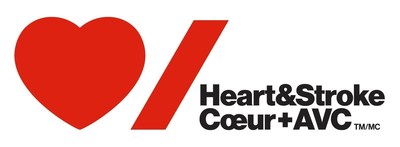New front-of-package nutrition labels announced for Canada
New front-of-package nutrition labels announced for Canada
Canada NewsWire
OTTAWA, ON, June 30, 2022
Clearly visible, easy to understand information will help Canadians make healthier choices
OTTAWA, ON, June 30, 2022 /CNW/ - Heart & Stroke was pleased to join the Honourable Jean-Yves Duclos, Minister of Health today as he announced the adoption of front-of-package nutrition label regulations for Canada. The new mandatory label will appear on food and beverages that are high in sodium, sugars or saturated fat and will help Canadians to make healthier choices more easily. This policy is critical because Canadians continue to consume large amounts of ultra-processed foods that add excess sodium, sugars and saturated fat to their diets and increase their risk of chronic disease.
"Canadians get nearly half of their daily calories from ultra-processed foods and this figure is even higher for our children and youth who are unfortunately the biggest consumers of these foods," says Doug Roth, CEO, Heart & Stroke. "Adding a clearly visible and easy to understand symbol on the front of these products will help people quickly spot foods high in sodium, sugars or saturated fat. This is especially true for those who have difficulty with the nutrition facts table found on the back of food packages, which can include seniors, people with low literacy, people with poor eyesight and those who speak languages other than English or French."
Canada joins countries like Chile and Mexico who have introduced similar labelling. An evaluation of Chile's front-of-package nutrition labels found a 25% decline in sugary drink purchases after 18 months and 37% of Chileans agreed that the labels led them to make changes to their food choices. Beyond guiding healthy choices, mandatory labels in Canada are also expected to incentivize companies to develop healthier products and reformulate existing foods to avoid the label.
In addition to front-of-package nutrition labelling, Heart & Stroke also applauds the federal government's action on the Healthy Eating Strategy to date including Canada's new food guide and the banning of trans fats in all foods sold in Canada. The remaining elements of the strategy, notably restrictions on the marketing of food and beverages high in sodium, sugars and saturated fat to children, will further support Canadians and their families. In fact, 90% of the highly influential food and beverage ads kids see on television and online are for ultra-processed foods.
"Millions of Canadians are living with chronic diseases that are impacted by the foods we eat, including heart disease and stroke," says Doug Roth. "Strong policies, like the ones in the Healthy Eating Strategy are changing our food environment and making it easier to make healthier choices."
Other elements of a multi-pronged approach to help Canadians eat better include actions to ensure nutritious foods and safe drinking water are available and accessible in all communities, the promotion of food skills and food literacy and a national school food program.
- A food that contributes 15% or more of the daily value of sodium, sugars or saturated fat will need to display the new front-of-package nutrition label.
- Fresh foods such as vegetables, fruit, meat and fish, as well as some milk products, will not be labelled.
- For main dishes with a serving size greater than 200g, the threshold will be 30% or more of daily value for sodium, sugars or saturated fat.
- For foods like jam, which are consumed in small quantities (less than 30g), the threshold will be 10% or more of daily value for sodium, sugars or saturated fat.
- The label is the result of many years of consultation with the public, experts and groups like Heart & Stroke. A draft of the front-of-package nutrition label was introduced in Canada Gazette Part I in February 2018.
Life. We don't want you to miss it. That's why Heart & Stroke has been leading the fight to beat heart disease and stroke for 70 years. We must generate the next medical breakthroughs, so Canadians don't miss out on precious moments. Together, we are working to prevent disease, save lives and promote recovery through research, health promotion and public policy.
SOURCE Heart and Stroke Foundation

![]() View original content to download multimedia: http://www.newswire.ca/en/releases/archive/June2022/30/c8732.html
View original content to download multimedia: http://www.newswire.ca/en/releases/archive/June2022/30/c8732.html

